Artist Playing Piano Painting Wall Art & Canvas Prints
Artist Playing Piano Painting Wall Art & Canvas Prints
Couldn't load pickup availability
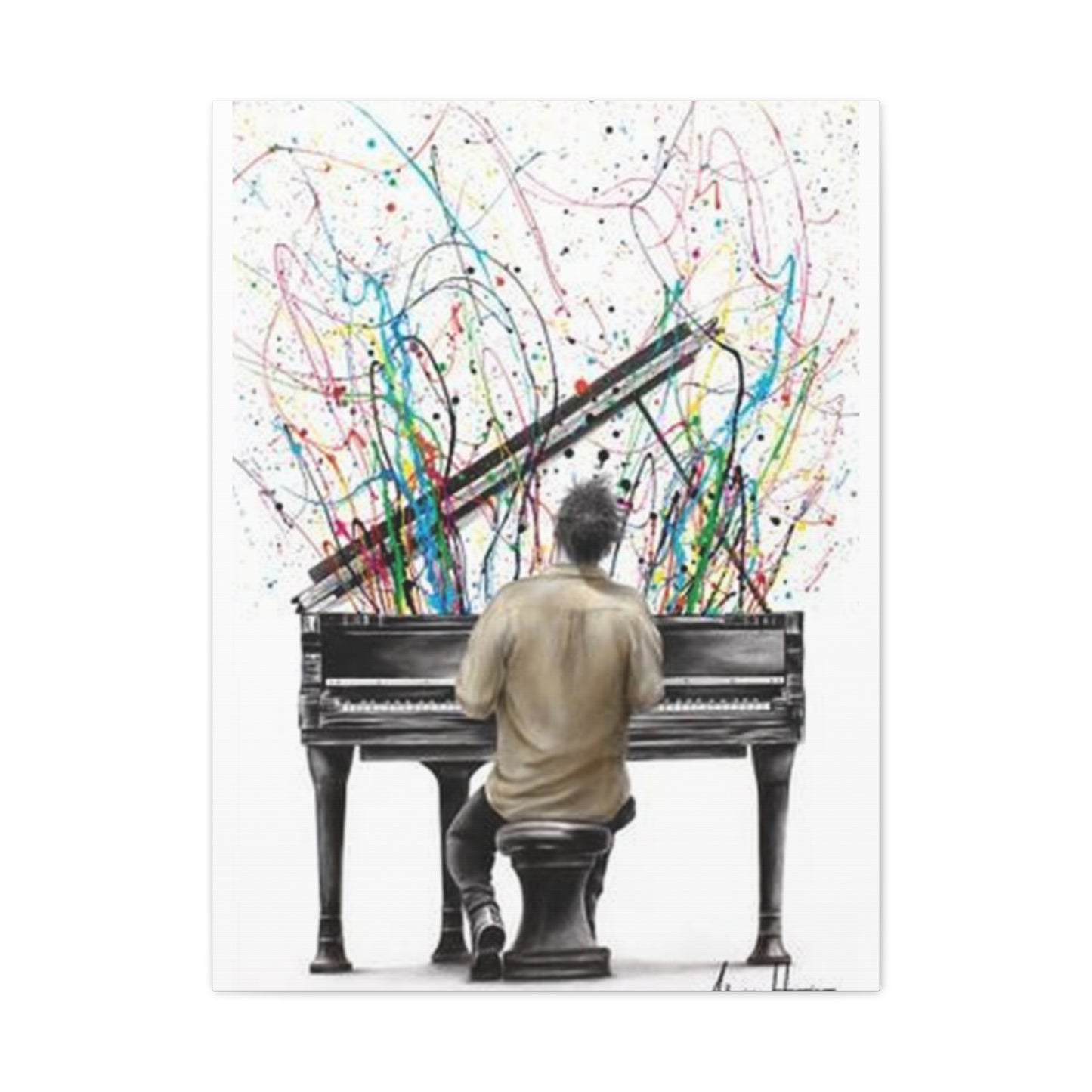
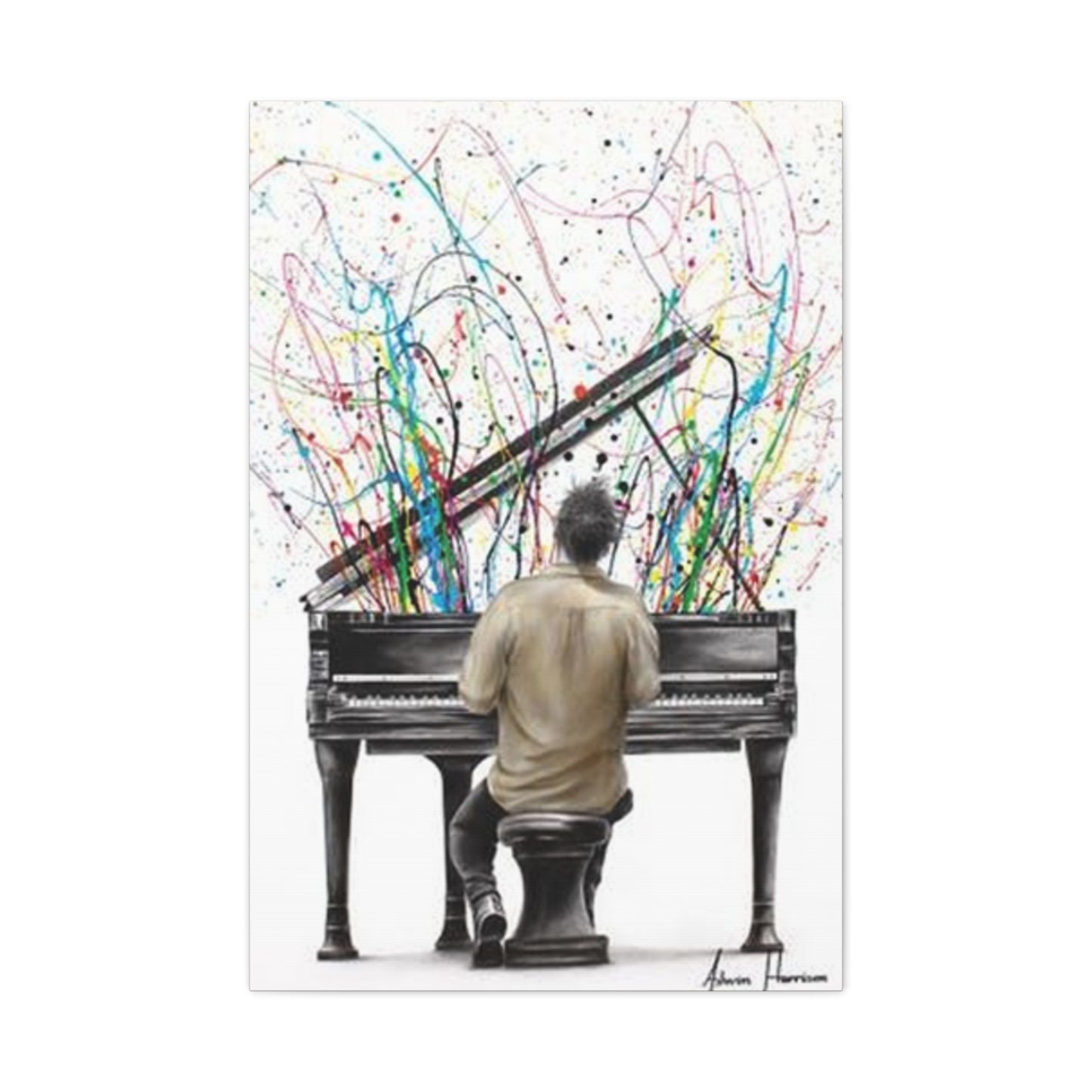
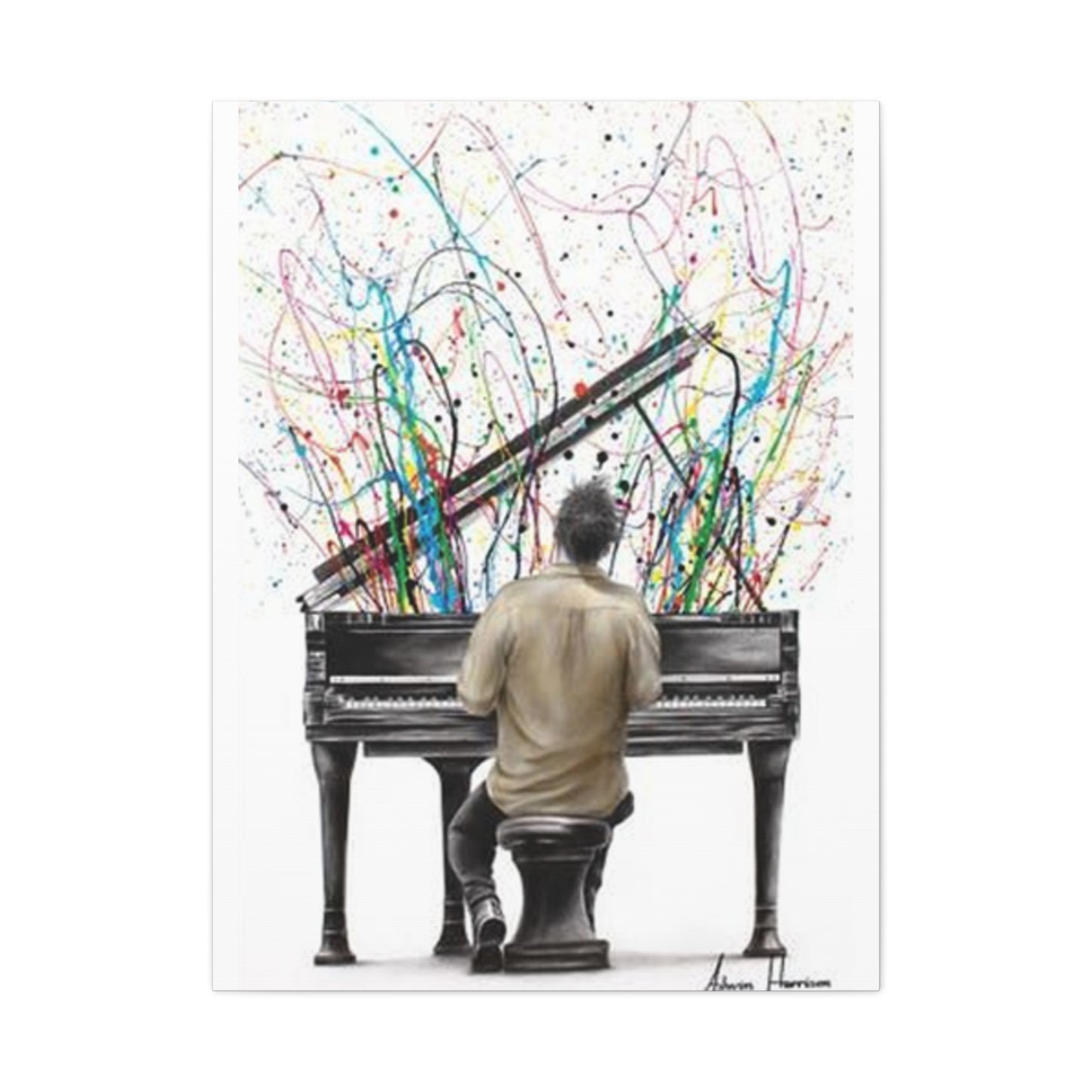
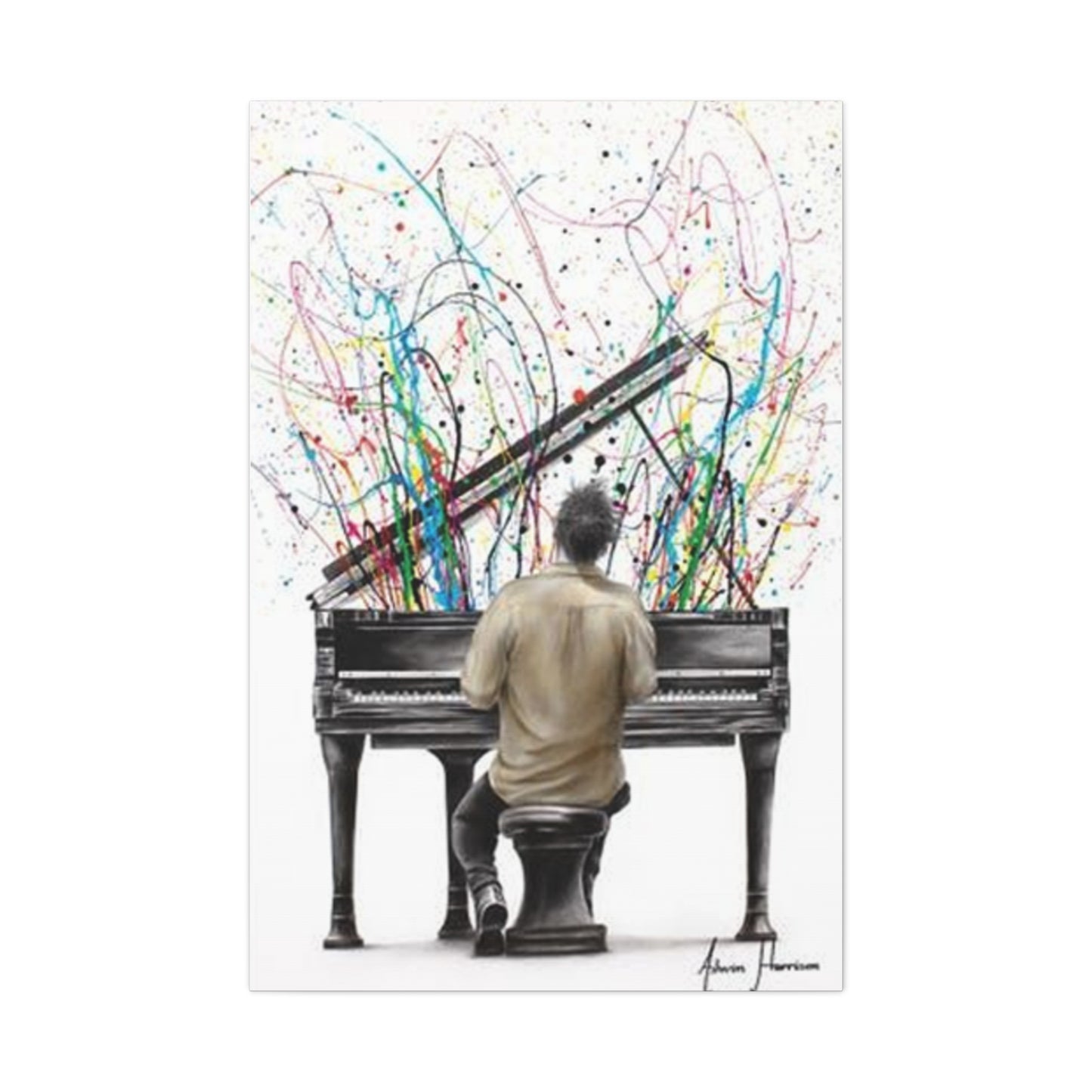
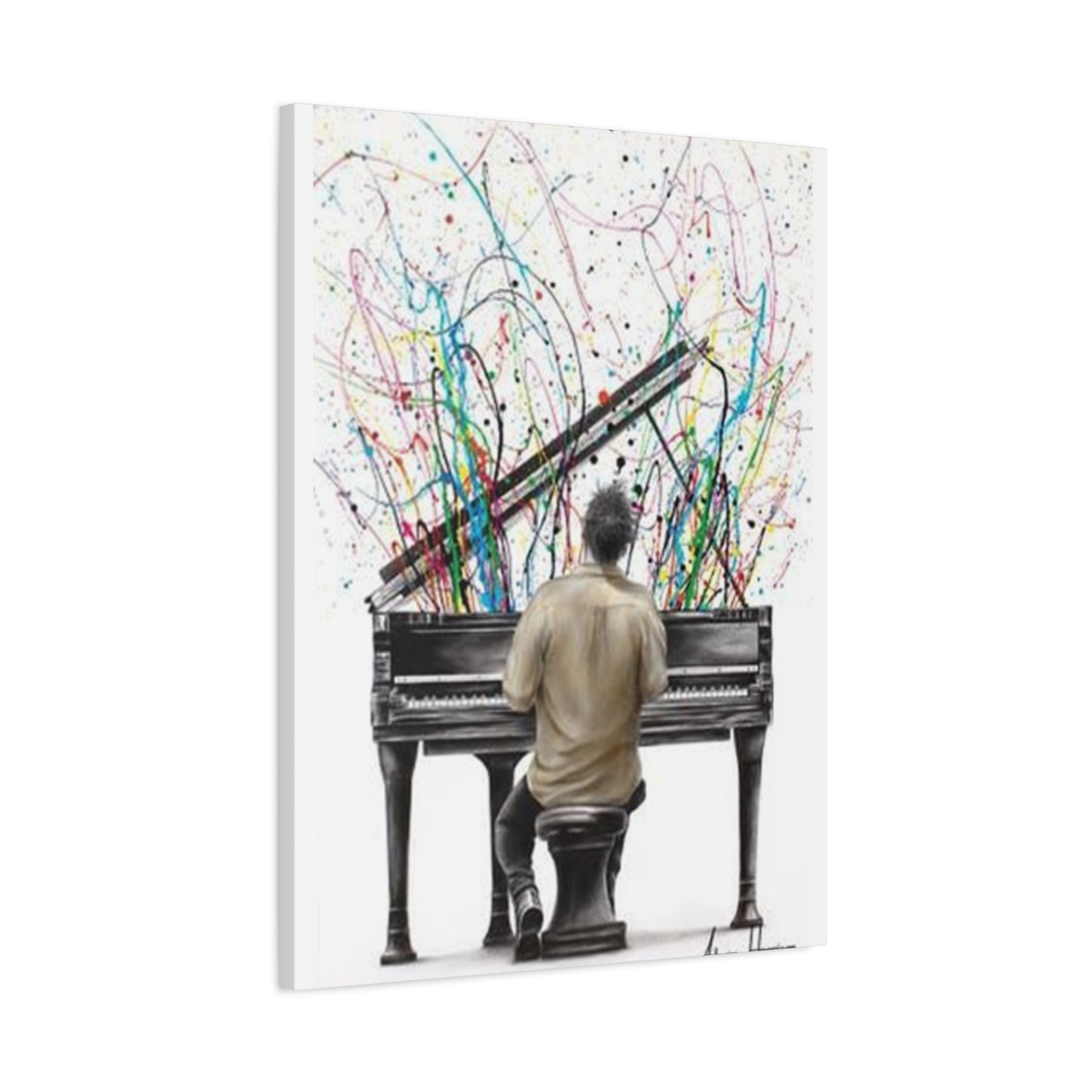
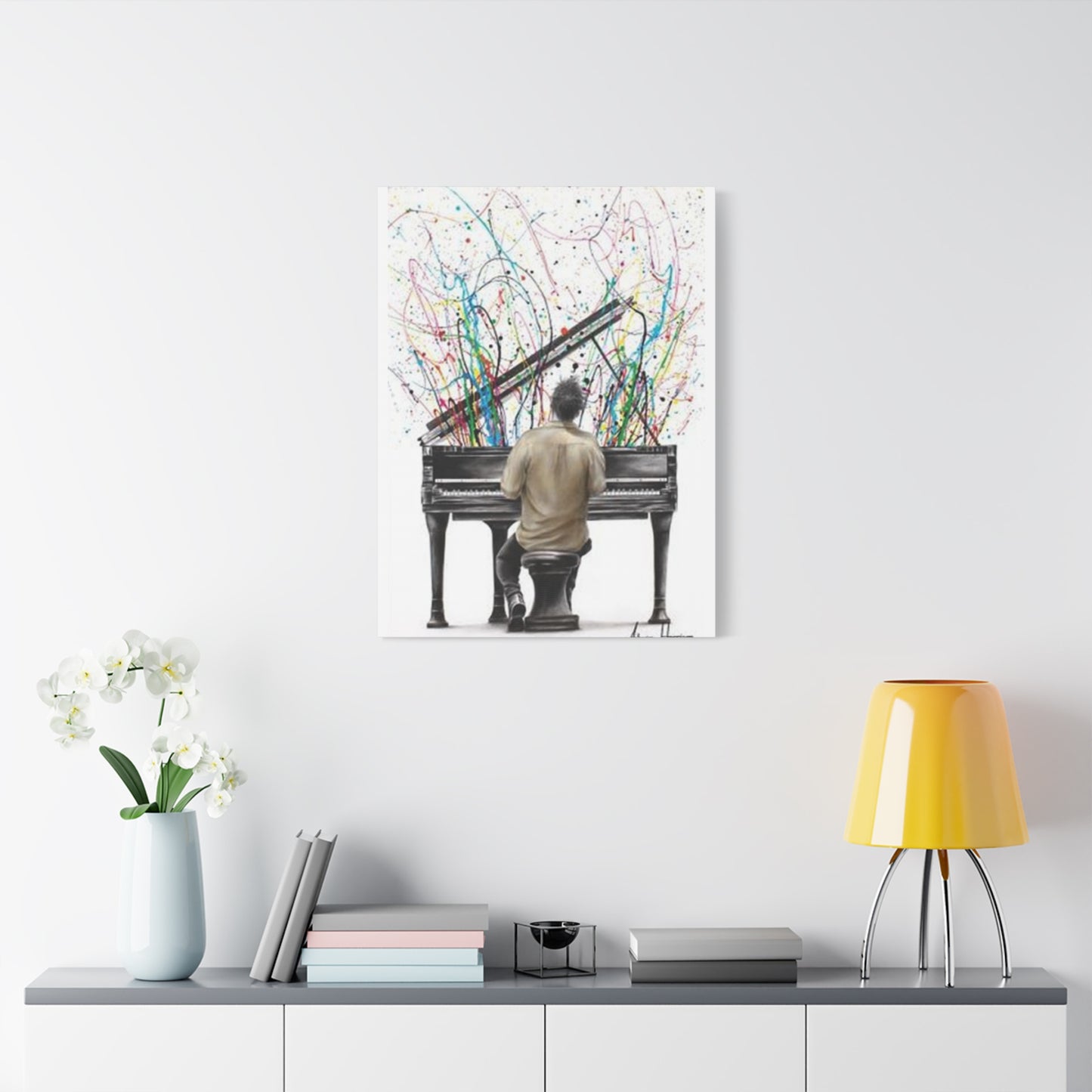
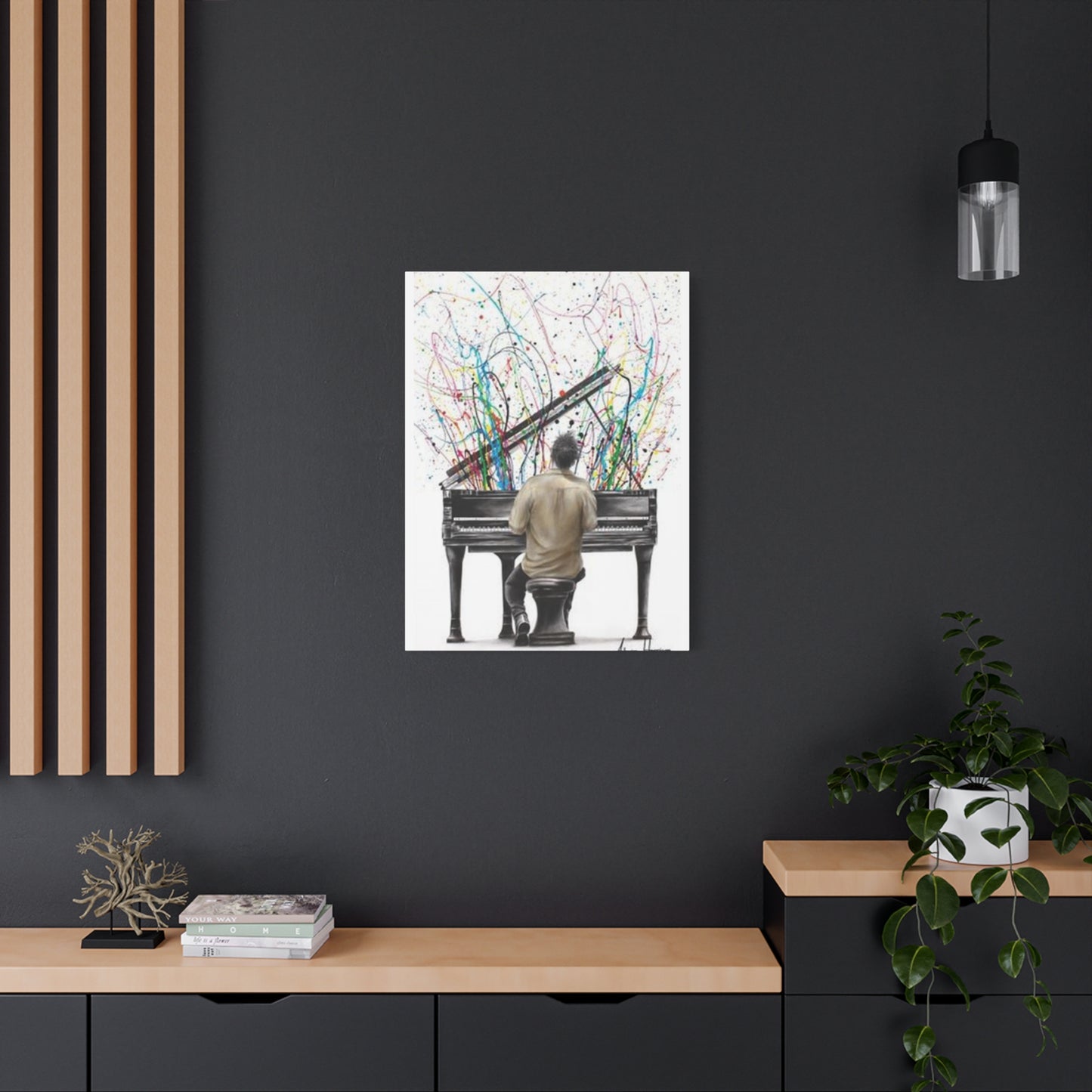
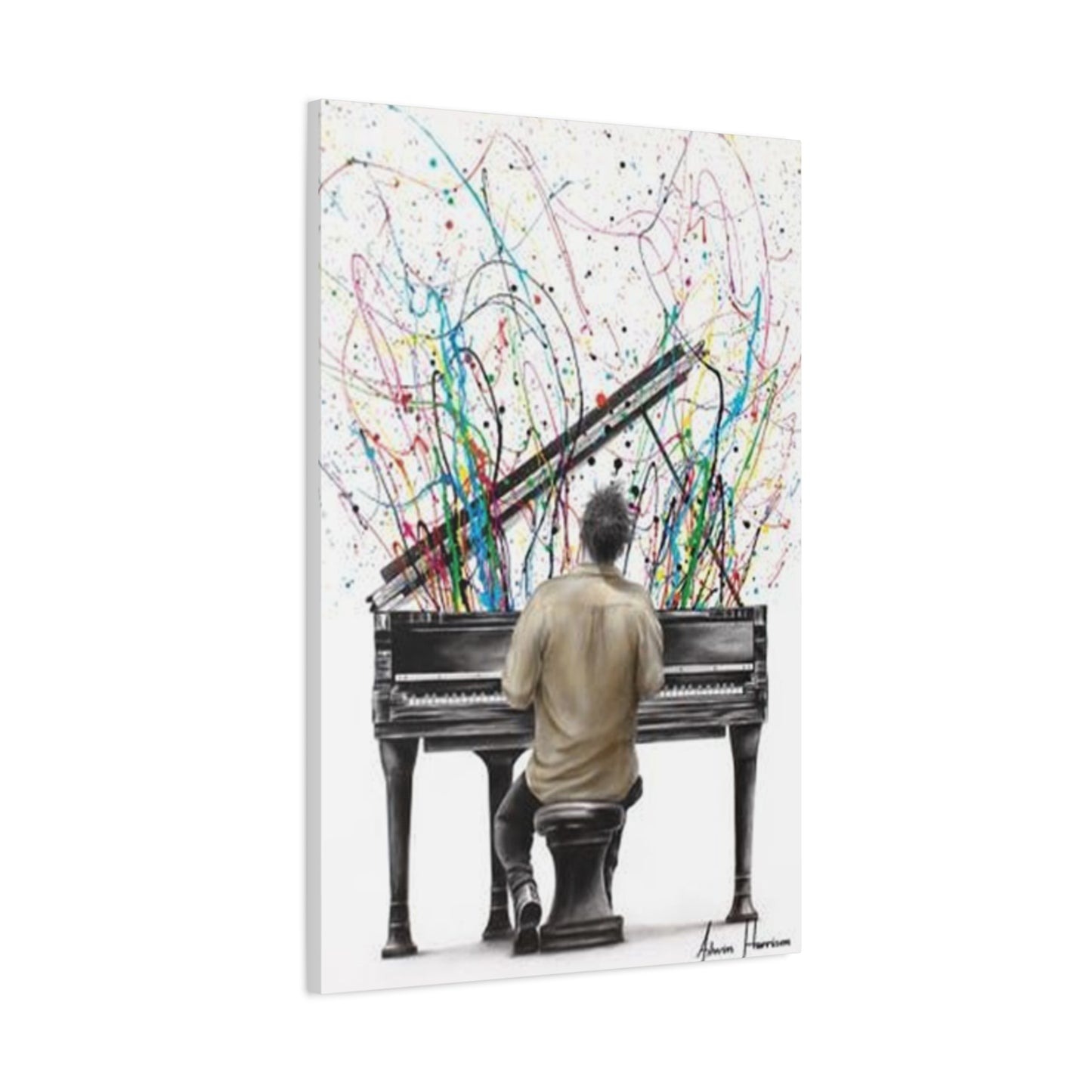
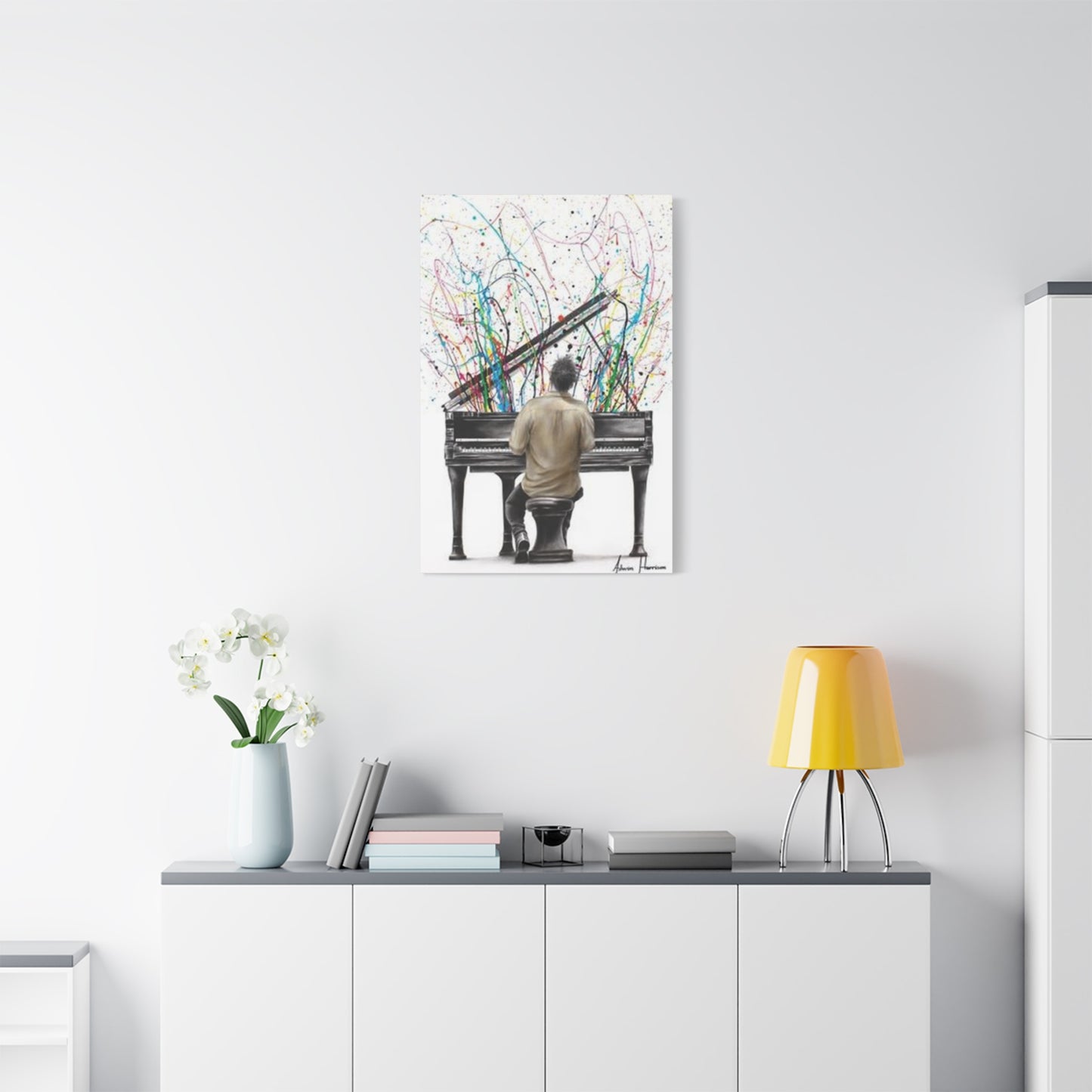
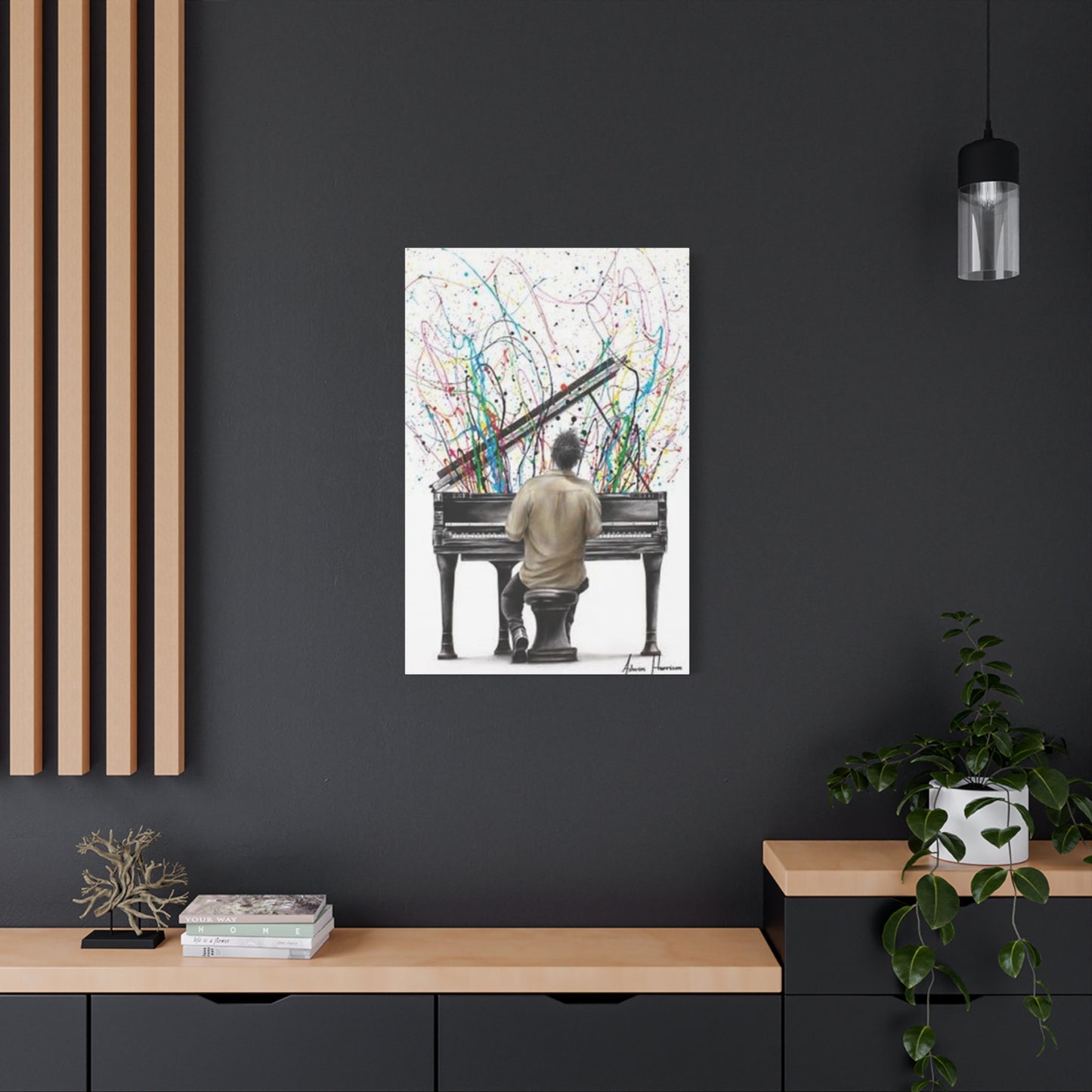

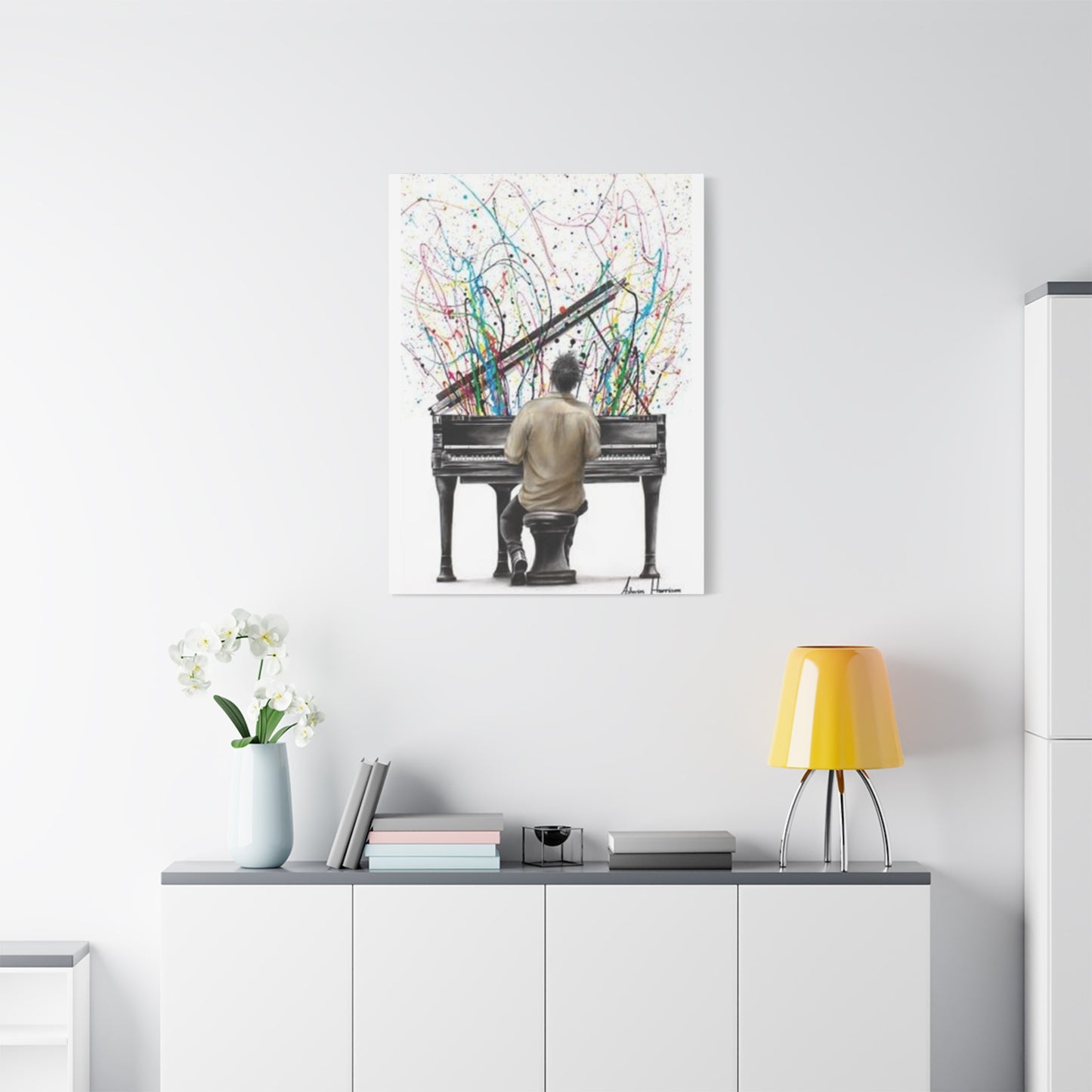
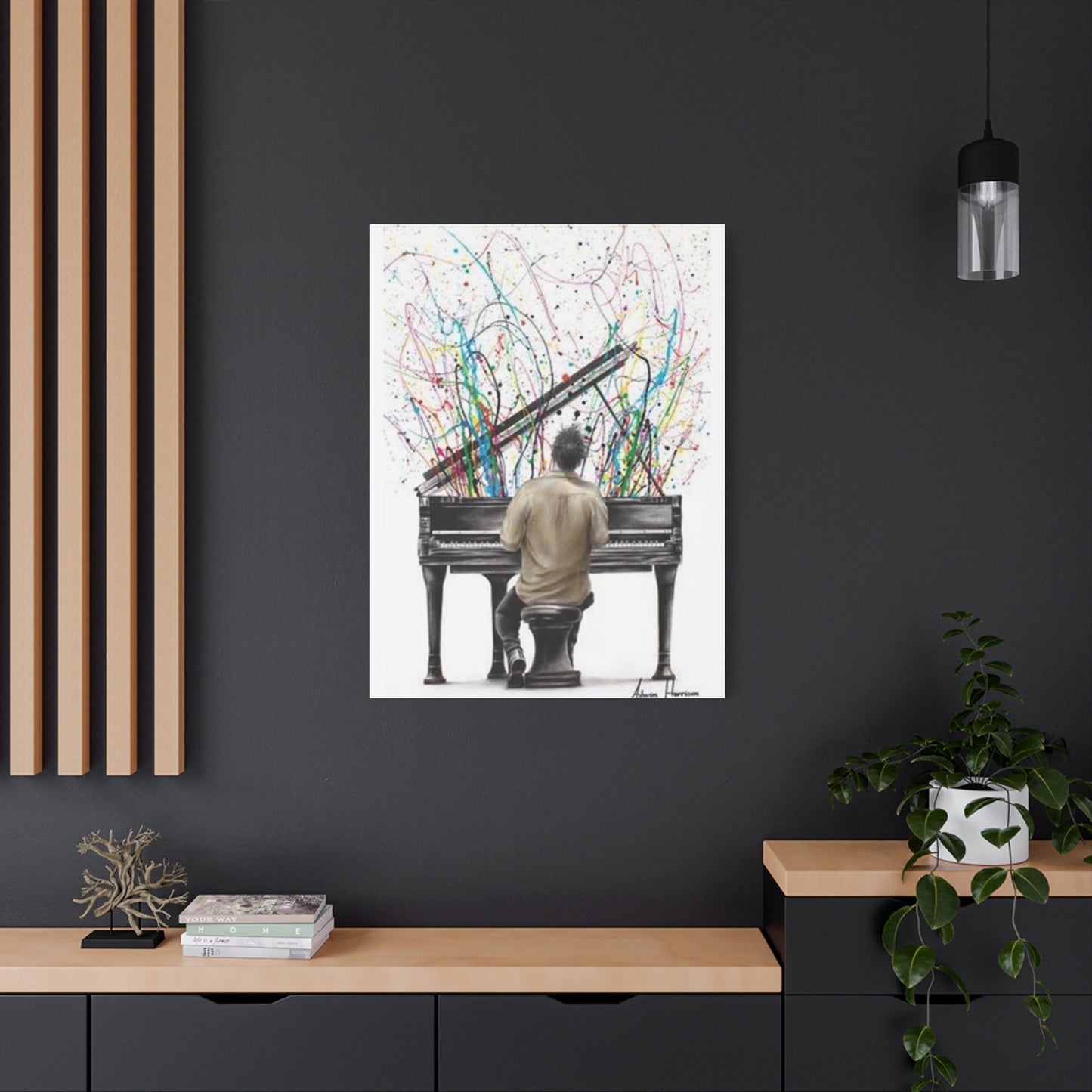
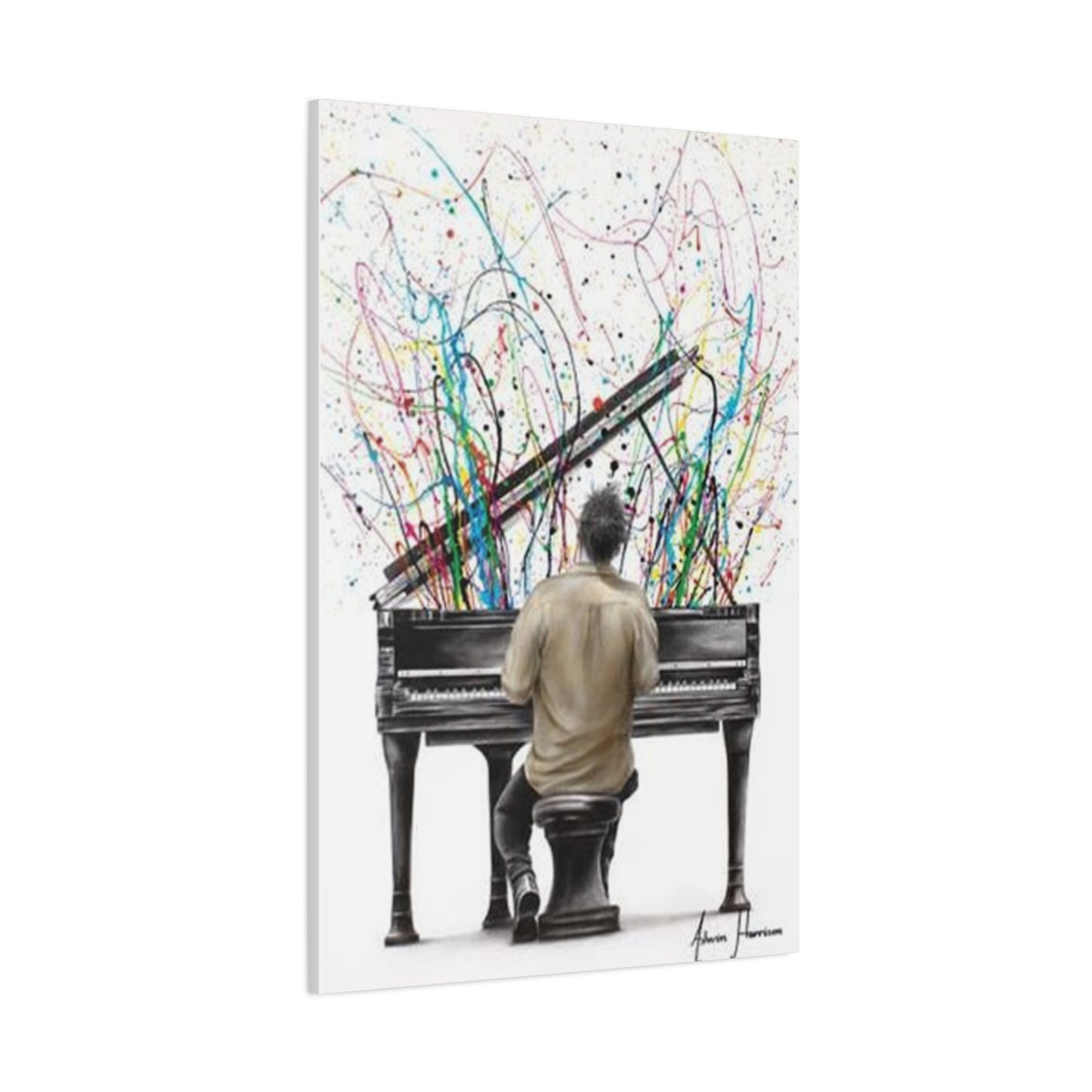

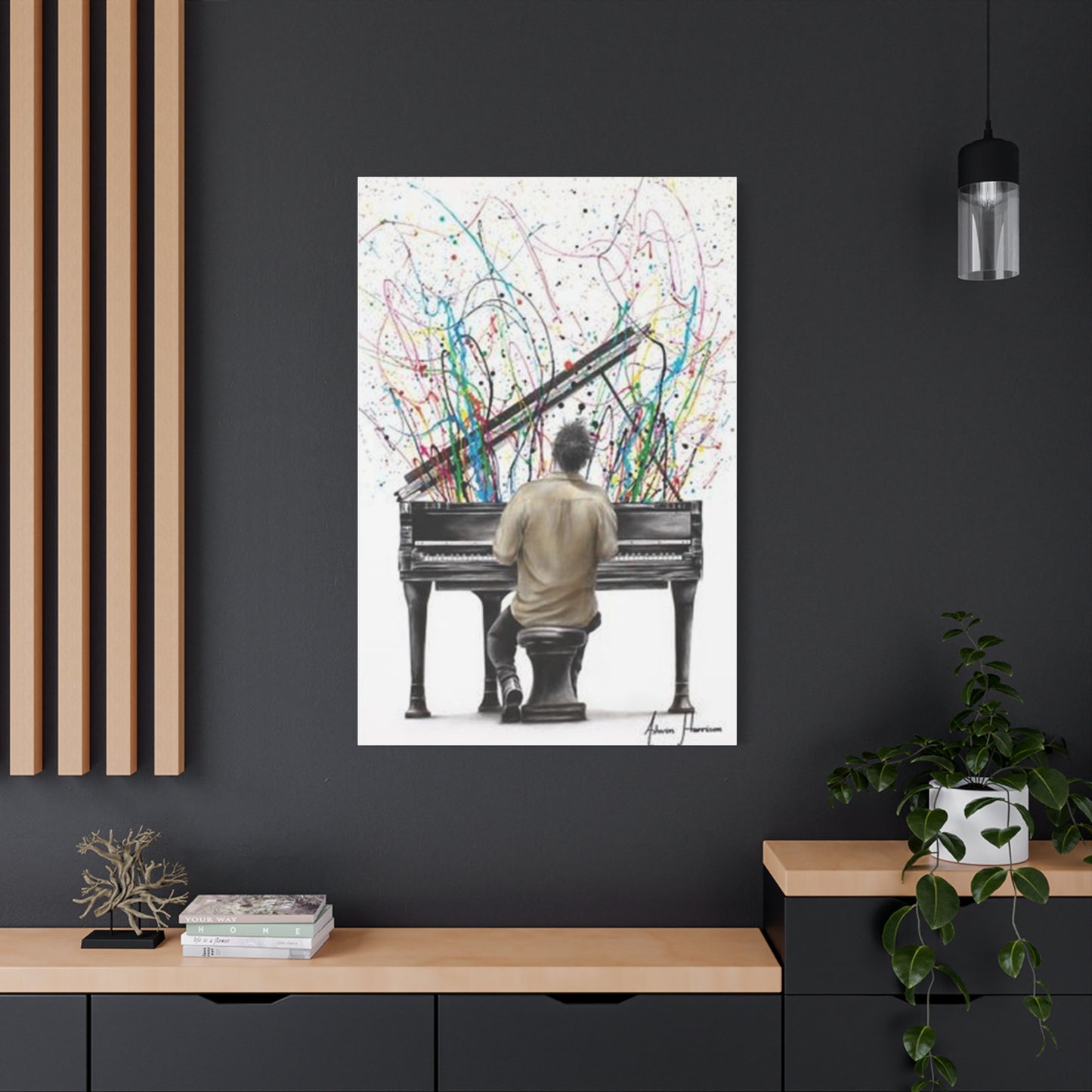
Captivating Piano Player Wall art: Artistic Paintings for Interiors
Creating an aesthetically pleasing environment around your upright piano requires thoughtful consideration of space, style, and functionality. The area surrounding your piano serves as both a musical sanctuary and a focal point in your living space. This comprehensive exploration will guide you through transforming your piano area into a stunning visual and auditory experience that reflects your personal style while maintaining the instrument's prominence.
The art of piano wall styling extends far beyond simply hanging a picture above your instrument. It encompasses a holistic approach to interior design that considers lighting, color schemes, textures, proportions, and the overall flow of your room. Whether you're working with a traditional family room, a dedicated music space, or incorporating your piano into a multi-functional living area, the principles of effective wall styling remain consistent while allowing for creative interpretation.
Modern interior design trends emphasize the importance of creating cohesive spaces that tell a story. Your piano area should reflect your musical passion while seamlessly integrating with your home's overall aesthetic. This involves careful selection of wall treatments, artwork, lighting fixtures, and decorative elements that complement rather than compete with your instrument's natural beauty.
The psychological impact of a well-designed piano space cannot be understated. Musicians and music lovers alike benefit from environments that inspire creativity and promote relaxation. The visual elements surrounding your piano contribute to the atmosphere in which you practice, perform, or simply enjoy the presence of this magnificent instrument. Research in environmental psychology suggests that thoughtfully designed spaces can enhance mood, creativity, and overall well-being.
Artistic Expression Through Piano Wall Arrangements
The wall space above and around your upright piano presents unlimited opportunities for artistic expression. Gallery walls have become increasingly popular in contemporary interior design, offering a dynamic way to display collections of artwork, photographs, and memorabilia that reflect your musical journey and personal interests. The key to successful gallery wall creation lies in achieving visual balance while maintaining individual piece significance.
When planning your gallery wall, consider the relationship between different elements. Musical themes naturally complement piano spaces, but don't limit yourself to obvious choices. Abstract art, landscape photography, vintage concert posters, and family photographs can all contribute to a meaningful and visually engaging display. The secret lies in finding common threads such as color palettes, frame styles, or subject matter that create unity within diversity.
Frame selection plays a crucial role in gallery wall success. While matching frames create a formal, cohesive appearance, mixing frame styles and materials can add visual interest and personality to your display. Consider combining wooden frames with metallic finishes, or mixing traditional frames with modern floating frames for contemporary appeal. The scale of frames should vary to create visual rhythm, but avoid extreme size differences that might create jarring contrasts.
Color coordination within your gallery wall enhances the overall impact while supporting your room's design scheme. Consider pulling colors from your existing decor, piano finish, or nearby furnishings to create harmonious connections throughout the space. Monochromatic color schemes create sophisticated, calming environments, while bold color combinations can energize and inspire creativity during practice sessions.
The arrangement process requires patience and experimentation. Begin by laying out your pieces on the floor, experimenting with different configurations until you achieve pleasing balance. Consider the visual weight of each piece, ensuring heavier or darker pieces are balanced by lighter elements. Remember that negative space between pieces is as important as the artwork itself, providing visual breathing room that prevents overcrowding.
Strategic Color Coordination for Piano Spaces
Color selection significantly influences the mood and atmosphere of your piano area. The relationship between wall colors, artwork, and your piano's finish creates the foundation for all subsequent design decisions. Understanding color theory and its psychological effects helps create environments that support musical activities while reflecting personal style preferences.
Traditional piano finishes range from rich ebony black to warm honey oak, each requiring different color approaches for optimal visual harmony. Black pianos create dramatic focal points that pair beautifully with both light and dark wall colors. Light colors such as soft grays, creams, or pastels create contrast that makes the piano appear to float against the wall, while darker colors create sophisticated, intimate atmospheres perfect for evening performances.
Brown or wood-toned pianos offer different opportunities for color coordination. Earth tones such as warm taupes, sage greens, or dusty blues create natural harmony with wooden piano finishes. These color combinations evoke feelings of warmth and comfort while maintaining sophisticated appeal. Complementary colors from the opposite side of the color wheel can create dynamic visual interest when used thoughtfully in accent pieces or artwork.
The psychological impact of color in musical spaces deserves careful consideration. Blues and greens are known for their calming properties, making them excellent choices for practice spaces where concentration and relaxation are priorities. Warmer colors such as soft yellows, peaches, or coral tones can energize and inspire creativity, particularly beneficial for spaces used for composition or performance preparation.
Neutral color palettes provide timeless foundations that allow flexibility in accent color selection through changeable elements such as throw pillows, artwork, or seasonal decorations. Grays, beiges, and whites create sophisticated backdrops that highlight both your piano and any decorative elements you choose to display. These neutral foundations also provide longevity, as they won't become dated or require frequent updates to maintain contemporary appeal.
Consider the natural light available in your piano space when selecting colors. Rooms with abundant natural light can accommodate darker colors without feeling cramped or oppressive, while spaces with limited natural light benefit from lighter colors that reflect available light and create feelings of spaciousness. The direction your windows face also influences color appearance throughout the day, with north-facing rooms receiving cooler light and south-facing rooms receiving warmer illumination.
Illumination Strategies for Enhanced Piano Wall Displays
Proper lighting transforms piano wall displays from simple decorations into dramatic focal points that enhance both the visual appeal and functionality of your musical space. The interplay between natural and artificial light sources creates depth, highlights textures, and draws attention to carefully curated displays while providing adequate illumination for musical activities.
Picture lighting represents the most direct approach to artwork illumination. Traditional picture lights mount directly above artwork, providing focused illumination that prevents glare while highlighting colors and details. LED picture lights offer energy efficiency and longevity while generating minimal heat that could potentially damage delicate artwork or photographs. The key to successful picture lighting lies in proper positioning and beam angle selection to ensure even illumination without harsh shadows.
Track lighting systems provide flexibility for illuminating multiple pieces within a gallery wall arrangement. Individual track heads can be positioned and angled to highlight specific artworks while providing overall ambient lighting for the entire piano area. This approach works particularly well in contemporary spaces where exposed track systems complement modern aesthetic preferences. Dimmer controls allow for lighting adjustment based on time of day and intended use of the space.
Wall sconces flanking your piano create balanced illumination while adding architectural interest to the wall design. These fixtures should be positioned to provide adequate light for reading music while avoiding glare on the piano keys or music stand. Traditional sconces with fabric shades create soft, diffused light perfect for intimate musical moments, while contemporary metal or glass fixtures add sculptural elements to modern decor schemes.
Recessed lighting, when properly positioned, can create dramatic uplighting effects that wash the wall behind your piano with gentle illumination. This technique works particularly well with textured wall treatments or when you want to create a subtle backdrop that doesn't compete with artwork or other decorative elements. The key lies in selecting appropriate beam angles and positioning fixtures to avoid harsh shadows or glare.
Natural light integration requires careful window treatment selection that balances privacy, light control, and aesthetic appeal. Sheer curtains allow maximum natural light penetration while providing privacy and softening harsh sunlight that could fade artwork or create glare on your piano finish. Layered window treatments combining sheers with heavier panels provide complete light control flexibility throughout the day.
Consider the color temperature of your lighting selections to ensure consistency throughout your piano space. Warm white LEDs (2700K-3000K) create cozy, intimate atmospheres perfect for evening practice sessions or entertaining, while cooler temperatures (3500K-4000K) provide better color rendering for daytime activities and artwork appreciation. Smart lighting systems allow for temperature adjustment throughout the day to match natural light changes.
Textural Elements and Dimensional Wall Treatments
Incorporating texture into your piano wall design adds visual interest and tactile appeal that elevates the space beyond simple flat surfaces. Three-dimensional elements create depth and shadow play that changes throughout the day as natural light moves across your space. Understanding how different textures interact with light and color helps create rich, layered environments that support musical activities.
Wainscoting installation below your piano creates architectural interest while providing protection from potential scratches or dings that might occur during instrument movement. Traditional raised panel wainscoting complements classic piano styles and formal room designs, while flat panel or board and batten styles suit contemporary or farmhouse aesthetics. The height of wainscoting should be proportional to your ceiling height and piano size to maintain visual balance.
Wood accent walls behind your piano create warm, natural backdrops that complement wooden piano finishes while adding significant texture and visual weight to the space. Reclaimed wood installations bring character and history to contemporary spaces, while clean-lined wood planks create modern appeal. Consider the grain pattern, color variation, and finish options that best complement your existing decor and piano style.
Fabric wall panels offer opportunities to introduce color, pattern, and sound absorption simultaneously. Upholstered panels can be custom-made to match your decor while providing acoustic benefits that improve sound quality in your piano space. Removable panels allow for seasonal changes or updates as your design preferences evolve. Consider velvet, linen, or wool fabrics that complement your piano bench or nearby seating.
Stone or brick accent walls create dramatic backdrops with significant textural impact. Natural stone veneer provides authentic texture and color variation while remaining lightweight enough for most wall applications. Manufactured stone products offer consistent sizing and installation ease while maintaining natural appearance. These treatments work particularly well in transitional or industrial design schemes.
Wallpaper has experienced a renaissance in contemporary interior design, with options ranging from subtle textures to bold patterns that can transform your piano space. Grasscloth wallpapers add natural texture and warmth, while geometric patterns create modern visual interest. Metallic accents in wallpaper designs reflect light and create dynamic surfaces that change appearance throughout the day.
Proportional Considerations for Balanced Piano Displays
Understanding scale and proportion ensures your piano wall styling enhances rather than overwhelms your musical instrument and surrounding space. The visual weight of decorative elements must balance with your piano's substantial presence while maintaining appropriate relationships with room size and ceiling height. Successful proportion creates harmony that feels natural and unforced.
The rule of thirds provides a foundation for positioning elements above your piano. Imagine dividing the wall space into three horizontal sections, with the most visually interesting elements placed along the dividing lines rather than centered. This creates more dynamic and visually appealing arrangements than simple centered placement. Apply this principle to both individual artwork pieces and overall gallery wall configurations.
Your piano's dimensions establish the baseline for all surrounding design decisions. A standard upright piano stands approximately 48-60 inches tall and 58 inches wide, creating substantial visual weight that requires careful balancing through wall treatments and decorative elements. Elements placed above your piano should relate proportionally to these dimensions, typically measuring between half and two-thirds the piano's width for optimal visual balance.
Ceiling height significantly influences the amount of wall space available for styling above your piano. Standard 8-foot ceilings provide limited space that requires careful element selection to avoid cramped appearances. Higher ceilings allow for larger artwork, multiple rows of gallery pieces, or dramatic architectural treatments that create impressive vertical emphasis. Consider the visual line created by your piano's top and how decorative elements interact with this horizontal element.
The distance between your piano and surrounding walls affects the visual impact of your styling choices. Pianos placed directly against walls create intimate settings where wall treatments have maximum impact, while instruments positioned away from walls require consideration of multiple viewing angles and room circulation patterns. Corner placements offer unique opportunities for wrap-around treatments that extend beyond a single wall surface.
Room size influences the scale of decorative elements that work effectively in your piano space. Large rooms can accommodate bold, oversized artwork or extensive gallery walls without appearing cluttered, while smaller spaces benefit from more restrained approaches that maintain visual breathing room. Consider how your piano area relates to other room functions and ensure your styling choices support rather than compete with overall room flow.
Adaptability in Piano Space Design
Creating piano spaces that adapt to seasonal changes keeps your musical environment fresh and inspiring throughout the year. Seasonal styling allows for creative expression while celebrating natural cycles and holidays that bring families together around musical traditions. The key lies in establishing a solid foundation that accommodates changeable elements without requiring complete redesigns.
Spring styling embraces renewal and growth through fresh color palettes, floral motifs, and natural elements that reflect the season's energy. Replace heavy winter artwork with lighter, brighter pieces featuring botanical themes or landscape photography. Incorporate fresh flowers or flowering branches in vases positioned safely away from your piano to avoid water damage. Light, airy fabrics in window treatments or nearby seating create feelings of freshness and new beginnings.
Summer decorating emphasizes lightness and casual elegance that reflects longer days and relaxed lifestyles. Nautical themes, beach photography, or abstract artwork in blues and whites create cooling visual effects. Consider removing heavy decorative elements that might feel oppressive during warmer months, replacing them with minimal, breezy alternatives that maintain visual interest without added weight.
Fall styling celebrates warmth and gathering through rich colors, natural textures, and harvest themes that complement musical traditions surrounding holiday seasons. Warm oranges, deep reds, and golden yellows in artwork or accent pieces create cozy atmospheres perfect for family gatherings and musical performances. Natural elements such as branches, pinecones, or seasonal fruits add textural interest while celebrating autumn's abundance.
Winter decorating focuses on creating intimate, warming environments that counteract cold weather's effects. Deeper colors, luxurious textures, and dramatic lighting create sophisticated settings perfect for holiday entertaining and cozy practice sessions. Metallic accents in silver or gold add sparkle and light reflection that brightens darker winter months. Consider adding soft throws or pillows to nearby seating in rich fabrics that invite relaxation and musical enjoyment.
Holiday decorating allows for temporary additions that celebrate special occasions without permanently altering your piano space design. Removable elements such as garland, small decorative objects, or seasonal artwork can transform your space while respecting your instrument's needs. Ensure any temporary decorations are positioned safely away from piano keys, strings, or moving parts to prevent damage or interference with musical activities.
Transitional elements that work across multiple seasons provide continuity while allowing for seasonal accent changes. Neutral backgrounds, classic artwork, and quality lighting fixtures remain constant while changeable elements such as flowers, decorative objects, or small accent pieces reflect seasonal preferences. This approach provides flexibility without requiring significant investment or storage space for seasonal items.
Musical Memorabilia Integration Strategies
Incorporating musical memorabilia into your piano wall styling creates personal connections while celebrating your musical journey and interests. These elements tell stories, inspire creativity, and reflect the importance of music in your life. The challenge lies in displaying these items tastefully without creating cluttered or overly nostalgic appearances that detract from sophisticated interior design.
Sheet music display requires careful consideration to prevent damage while creating visual interest. Framing favorite pieces or compositions protects them from handling while creating meaningful wall art. Consider rotating displayed pieces seasonally or for special occasions, keeping unused sheet music stored safely in music cabinets or benches. Digital printing of rare or valuable pieces allows for display while preserving originals.
Concert programs and tickets create interesting collage opportunities when arranged thoughtfully within frames or shadow boxes. Group programs by venue, artist, or time period to create cohesive displays that tell stories about your musical experiences. Mix programs with photographs from the same events to create comprehensive memory displays that serve as conversation starters during gatherings.
Musical instrument collections, when appropriately sized and safely mounted, add three-dimensional interest to piano wall displays. Small instruments such as harmonicas, flutes, or violins can be displayed in shadow boxes or on secure wall mounts. Ensure mounting hardware is appropriate for instrument weight and wall construction to prevent damage from falling objects.
Photographs of musical performances, whether professional or family moments, create personal connections that reflect music's role in your life. Mix professional concert photography with candid family moments around your piano to create galleries that celebrate both musical excellence and personal joy. Consider black and white photography for timeless appeal that coordinates with various decor styles.
Awards, certificates, or recognition items deserve display when they represent significant achievements or milestones in your musical journey. Frame items appropriately and position them where they can be appreciated without overwhelming other display elements. Consider grouping achievement displays in dedicated areas rather than scattered throughout your piano wall arrangement.
Music-related artwork by local artists or pieces collected during travels adds cultural depth to your piano space while supporting artistic communities. Original artwork, limited edition prints, or unique pieces that reflect musical themes create sophisticated displays that demonstrate appreciation for artistic expression beyond your own musical interests.
Contemporary Design Trends in Piano Spaces
Modern piano space design embraces minimalism, clean lines, and sophisticated color palettes that allow musical instruments to shine as sculptural elements within contemporary interiors. Understanding current trends helps create spaces that feel fresh and relevant while maintaining timeless appeal that won't quickly become dated.
Minimalist approaches emphasize quality over quantity, selecting fewer but more impactful elements that create maximum visual effect. Clean-lined artwork, simple color schemes, and uncluttered arrangements allow your piano's natural beauty to dominate the space while providing subtle support through carefully chosen accent pieces. This approach works particularly well in smaller spaces where simplicity prevents cramped feelings.
Mixed media artwork combines traditional and contemporary elements through varied materials, techniques, and subjects that create visual interest while maintaining sophisticated appeal. Photography combined with painting, metal elements integrated with canvas, or three-dimensional pieces that extend beyond traditional flat artwork create dynamic displays that reflect contemporary artistic trends.
Smart home integration allows for automated lighting control, sound system management, and climate control that enhances both comfort and functionality in piano spaces. Programmable lighting scenes can adjust throughout the day to support different activities, from bright practice sessions to intimate evening performances. Hidden technology integration maintains clean aesthetic lines while providing modern conveniences.
Sustainable design considerations influence material selection, emphasizing reclaimed wood, recycled metals, and eco-friendly finishes that reduce environmental impact while creating unique visual appeal. Vintage or antique elements mixed with contemporary pieces create eclectic arrangements that reflect environmental consciousness while maintaining sophisticated design standards.
Biophilic design principles incorporate natural elements that connect interior spaces with outdoor environments, promoting well-being and creativity. Living walls, natural materials, and plant integration create calming environments that support musical activities while reflecting contemporary wellness trends. Consider maintenance requirements and positioning to ensure plant choices thrive in your specific lighting and environmental conditions.
Flexible design solutions accommodate changing needs and preferences through modular elements, adjustable lighting, and removable decorative pieces that allow for easy updates and modifications. This approach recognizes that musical spaces evolve with changing family dynamics, musical interests, and design preferences while maintaining investment value in foundational elements.
Professional Installation and Safety Considerations
Proper installation of wall-mounted elements ensures both safety and longevity while protecting your investment in both your piano and decorative elements. Understanding weight limitations, wall construction, and appropriate hardware selection prevents damage and creates secure displays that maintain their appeal over time.
Wall stud location and appropriate fastener selection provide the foundation for secure artwork and shelf installation. Use electronic stud finders to locate wall framing, and select screws or anchors rated for weights exceeding your planned displays. When in doubt, consult with professional installers who can assess your specific wall construction and recommend appropriate hardware.
Weight distribution across multiple mounting points prevents concentrated stress that could damage walls or cause mounting failures. Large or heavy artwork pieces should be supported by multiple mounting points that share the load across strong wall framing members. Consider professional installation for pieces exceeding 20 pounds or when wall construction is uncertain.
Electrical work for specialized lighting should be performed by qualified electricians to ensure code compliance and safety. Picture lights, track systems, and wall sconces require proper wiring and switching that meets local electrical codes. Professional installation ensures proper grounding, appropriate circuit loading, and safe operation while maintaining warranty coverage on fixtures.
Piano positioning considerations affect both instrument health and safety in relationship to wall-mounted displays. Maintain adequate clearance between your piano and walls to allow for proper ventilation, tuning access, and safe removal of decorative items during piano maintenance. Consider the swing radius of piano lids and bench movement when positioning nearby elements.
Climate control in piano spaces requires attention to humidity and temperature stability that protects both your instrument and artwork. Avoid positioning heat sources or air conditioning vents directly onto your piano or nearby artwork. Consider humidity monitoring and control systems in areas with extreme seasonal variations that could damage wooden instruments or artwork.
Insurance considerations may require documentation of valuable artwork or collectibles displayed in your piano space. Photograph your displays, maintain purchase receipts, and consider appraisals for valuable pieces. Discuss coverage options with your insurance agent to ensure adequate protection for both your piano and decorative elements.
Conscious Design Solutions
Creating stunning piano wall displays doesn't require unlimited budgets when creative thinking and strategic planning guide your decisions. Understanding where to invest in quality pieces versus where to save through DIY solutions or budget alternatives allows for impressive results that reflect personal style while respecting financial constraints.
DIY artwork creation offers unlimited customization possibilities while controlling costs and ensuring perfect fit for your specific space and color scheme. Photography printing in various sizes allows for custom gallery walls using your own images at a fraction of professional artwork costs. Consider local printing services for quality results on archival papers that resist fading and maintain appearance over time.
Thrift shopping and estate sales provide opportunities to discover unique artwork, frames, and decorative objects at significant savings compared to retail prices. Develop an eye for quality pieces that can be refreshed through cleaning, reframing, or minor repairs. Mix vintage finds with new purchases to create eclectic arrangements that reflect personal history and style preferences.
Frame repurposing allows for custom looks without custom prices when existing frames are updated through painting, staining, or hardware changes. Spray paint transforms mismatched frames into coordinated sets, while new matting updates older pieces for contemporary appeal. Consider grouping budget frames in larger arrangements where individual frame quality is less noticeable than overall impact.
Seasonal rotation of displayed elements maximizes visual impact from limited collections while maintaining fresh appearances throughout the year. Store off-season pieces safely and rotate displays to reflect changing seasons, holidays, or mood preferences. This approach prevents visual boredom while maximizing investment in decorative elements.
Plant integration provides natural beauty at modest costs while offering opportunities for propagation and expansion of green elements throughout your space. Select low-maintenance varieties appropriate for your lighting conditions, and consider attractive containers that complement your decor style. Plants improve air quality while adding life and movement to static displays.
Library and museum shop reproductions offer access to classic artwork and photography at affordable prices while maintaining quality appearance. Many institutions offer high-quality prints of famous pieces that coordinate beautifully with traditional piano styles and formal room designs. Frame these pieces appropriately to achieve custom gallery appearance.
Integration in Modern Piano Spaces
Contemporary piano spaces benefit from thoughtful technology integration that enhances functionality while maintaining aesthetic appeal. Smart home features, audio systems, and digital tools support musical activities while providing modern conveniences that reflect current lifestyle expectations.
Smart lighting systems allow for programmable scenes that adjust automatically throughout the day or can be controlled remotely through smartphone apps. Create practice session lighting that provides optimal illumination for reading music, evening performance settings that create intimate ambiance, and party modes that highlight your piano area as entertainment focal point. Integration with voice control systems enables hands-free adjustments during musical activities.
Audio system integration supports both practice and entertainment functions through strategically placed speakers that complement your piano without competing with acoustic sound quality. Consider in-wall or ceiling speakers for invisible integration, or select speakers with design appeal that contribute to your room's aesthetic. Wireless connectivity allows for streaming music services, recording capabilities, and accompaniment playback during practice sessions.
Climate monitoring systems protect both your piano and artwork through continuous tracking of temperature and humidity levels that affect instrument tuning stability and artwork preservation. Smart thermostats can maintain optimal conditions automatically while providing alerts when conditions move outside safe ranges. This technology is particularly valuable in areas with extreme seasonal climate variations.
Digital music libraries accessed through tablets or computers provide extensive sheet music collections without requiring physical storage space that could clutter your carefully designed wall displays. Consider mounting solutions that position digital devices conveniently for reference while maintaining clean sight lines to your wall styling. Ensure mounting hardware allows for device removal and charging as needed.
Security systems protect valuable instruments and artwork through monitoring and alert systems that provide peace of mind whether you're home or away. Modern systems integrate with smartphone apps for remote monitoring and can include specific sensors for motion detection in your piano area. Consider discrete installation that doesn't interfere with your design aesthetic.
Home automation integration connects your piano space with whole-house systems that control lighting, climate, security, and entertainment functions through centralized controls. This allows for custom scenes that prepare your space for different activities while maintaining energy efficiency and optimal conditions for both comfort and instrument health.
Longevity Strategies
Protecting your investment in both piano and decorative elements requires ongoing maintenance awareness and proactive care strategies that preserve appearance and functionality over time. Understanding how different materials age and respond to environmental conditions guides selection decisions while informing care routines that extend lifespan.
Artwork preservation requires attention to light exposure, humidity levels, and handling practices that prevent fading, warping, or damage over time. Position valuable pieces away from direct sunlight or invest in UV-protective glazing for framed works. Rotate displays periodically to prevent uneven fading, and maintain stable humidity levels that prevent paper artwork from becoming brittle or dimensional changes in wooden frames.
Cleaning protocols for different wall treatments and decorative elements maintain appearance while preventing damage from improper care techniques. Dust artwork regularly using soft brushes or microfiber cloths, and clean glass or acrylic glazing with appropriate cleaners that don't leave residue or cause streaking. Avoid harsh chemicals near your piano that could damage finishes or affect sound quality.
Frame inspection and maintenance prevent deterioration that could damage artwork or create safety hazards from falling pieces. Check mounting hardware periodically for loosening, especially in areas subject to vibration from piano playing or household activities. Tighten screws as needed and replace any corroded or damaged hardware before problems develop.
Piano care coordination ensures that wall-mounted elements don't interfere with necessary instrument maintenance such as tuning, cleaning, or repairs. Maintain adequate clearance around your piano for service access, and consider removable decorative elements in areas where technicians require workspace. Communicate with piano technicians about nearby artwork that might require protection during service visits.
Seasonal maintenance routines address environmental changes that affect both instruments and decorative elements. Adjust humidity controls as seasons change, inspect for any damage from extreme weather conditions, and perform deep cleaning activities during times when piano usage might be reduced. Document maintenance activities to track patterns and identify potential problems before they become serious.
Professional conservation services for valuable artwork or antique decorative elements provide specialized care that extends lifespan while maintaining appearance and value. Establish relationships with qualified conservators before problems develop, and maintain documentation of professional services performed. Consider professional advice for valuable pieces even if you perform routine care yourself.
Creating Harmonious Multi-Functional Spaces
Modern living often requires piano spaces to serve multiple functions beyond musical activities. Successfully integrating piano areas into multi-use rooms requires careful planning that addresses traffic flow, sight lines, and activity coordination while maintaining the piano's role as both functional instrument and decorative focal point.
Living room integration presents opportunities to create sophisticated entertainment areas where your piano serves as both musical instrument and architectural anchor for seating arrangements and conversation areas. Consider sight lines from various seating positions to ensure your piano wall styling contributes positively to the overall room experience. Coordinate color schemes and design themes between piano area and surrounding living spaces for cohesive appeal.
Home office combinations allow for musical breaks that refresh creativity and productivity while making efficient use of available space. Position computer workstations to avoid glare on piano keys or interference with musical activities. Consider acoustic treatments that manage sound levels between work and practice activities, and design storage solutions that accommodate both office supplies and musical materials.
Guest room incorporation requires attention to sleep environment needs while maintaining musical functionality and visual appeal. Consider the impact of piano practice on guest comfort, and design wall treatments that create calming environments suitable for rest while celebrating musical interests. Provide storage for personal items that doesn't interfere with piano access or wall display integrity.
Family room functionality emphasizes durability and child-friendly design elements that withstand daily use while maintaining sophisticated appearance. Select artwork and decorative objects that can tolerate occasional contact from family activities, and position valuable or fragile items safely above potential damage zones. Consider washable wall treatments and protective measures for high-traffic areas around your piano.
Entertainment space design maximizes your piano's role in hosting gatherings while ensuring guest comfort and conversation flow. Arrange seating to encourage musical performances while providing clear sight lines to your piano wall displays. Consider lighting control that creates appropriate ambiance for different types of gatherings, from intimate musical evenings to larger celebrations.
Flexible furniture arrangements allow for easy reconfiguration based on intended use while maintaining design integrity and piano access. Select pieces that move easily and store conveniently when not needed, and avoid permanent installations that limit future flexibility. Consider dual-purpose items that serve both musical and general living functions while contributing to overall design appeal.
Advanced Lighting Design Techniques
Sophisticated lighting design transforms piano spaces into dynamic environments that adapt to different uses while highlighting architectural features and decorative elements. Understanding layered lighting principles and advanced control options creates professional-quality results that enhance both musical activities and overall room appeal.
Ambient lighting provides overall illumination that creates comfortable base levels for general activities while establishing mood and atmosphere in your piano space. This foundational layer comes from ceiling fixtures, wall sconces, or indirect lighting sources that wash walls and ceilings with gentle illumination. Dimmer controls allow for adjustment based on time of day and intended use.
Task lighting addresses specific functional needs such as music reading, piano key illumination, or artwork appreciation. Adjustable fixtures allow for precise positioning that prevents glare while providing adequate illumination for detailed activities. Consider multiple task lighting sources that can be used independently or in combination based on specific needs.
Accent lighting creates visual drama and focal points through directed illumination that highlights specific elements such as artwork, architectural features, or decorative objects. Track systems, picture lights, and strategically placed spots create these effects while adding depth and visual interest to your piano wall displays. Accent lighting typically operates at lower levels than ambient or task lighting.
Color temperature selection influences mood and functionality while affecting the appearance of artwork, wall colors, and piano finishes. Warm temperatures (2700K-3000K) create intimate, cozy environments perfect for evening relaxation or entertaining, while cooler temperatures (3500K-4000K) provide better color rendering for daytime activities and detailed work.
Dynamic lighting control through smart systems allows for programmed scenes that automatically adjust multiple light sources for different activities and times of day. Create morning practice scenes with bright, cool lighting, afternoon entertaining modes with warm ambient light, and evening performance settings with dramatic accent lighting. Voice control and smartphone integration provide convenient adjustment options.
Natural light integration maximizes daylight benefits while controlling potential problems such as glare or heat gain that could affect your piano or artwork. Strategic window treatments, light shelves, or reflective surfaces can redirect and diffuse natural light throughout your space. Consider how natural light changes throughout the day and seasons when planning artificial lighting placement and control.
Color Psychology in Musical Environments
Understanding how colors affect mood, creativity, and comfort enhances your ability to create piano spaces that support musical activities while reflecting personal preferences and lifestyle needs. Color psychology research provides insights into optimal color selection for different musical activities and personality types.
Blue tones promote calmness and concentration, making them excellent choices for practice spaces where focus and relaxation are priorities. Light blues create open, airy feelings that work well in smaller spaces, while deeper navy or teal tones add sophistication and drama to larger rooms. Blue works particularly well with traditional wooden piano finishes and classic decorative styles.
Green shades connect with nature and promote balance and harmony, qualities essential for musical expression and enjoyment. Sage greens complement traditional decor styles, while brighter lime or emerald tones add contemporary energy. Green is particularly effective in spaces that receive limited natural light, as it creates the impression of bringing outdoor elements inside.
Warm colors including reds, oranges, and yellows stimulate energy and creativity, making them valuable for composition spaces or areas used for lively musical activities. However, these colors can be overwhelming in large amounts, so consider using them as accent colors through artwork, decorative objects, or changeable elements rather than dominant wall colors.
Neutral colors provide timeless foundations that allow flexibility in accent color selection while maintaining sophisticated appeal over time. Grays, beiges, and whites create elegant backdrops that highlight both your piano and decorative elements without competing for attention. Neutral schemes work well when you prefer to change seasonal accents or when multiple family members have different color preferences.
Purple and violet tones create luxurious, creative environments that can inspire artistic expression while maintaining elegance. These colors work particularly well in formal music rooms or spaces used for serious study and practice. Lighter lavender tones create romantic, dreamy atmospheres, while deeper purples add drama and sophistication.
Black and white combinations create timeless elegance that naturally complements piano finishes while providing dramatic contrast opportunities. This classic pairing works in both traditional and contemporary settings while providing a neutral foundation that accommodates colorful artwork or decorative accents.
Seasonal Styling Strategies
Adapting your piano space to reflect seasonal changes maintains visual interest while celebrating natural cycles and creating environments that feel fresh and current. Seasonal styling allows for creative expression without requiring permanent changes to foundational design elements.
Spring styling emphasizes renewal and growth through fresh colors, natural elements, and lighter textures that reflect the season's energy. Replace heavy winter artwork with botanical themes, landscape photography, or abstract pieces in fresh greens and soft pastels. Introduce flowering branches or fresh flowers in appropriate containers positioned safely away from your piano.
Summer decorating focuses on creating cool, relaxed environments that counteract warm weather while maintaining sophisticated appeal. Light blues, whites, and sandy beiges create cooling visual effects, while natural materials such as rattan or bamboo add textural interest. Consider removing heavy decorative elements that might feel oppressive during warmer months.
Fall styling celebrates warmth and gathering through rich colors and natural textures that complement family traditions and holiday preparations. Warm oranges, deep reds, and golden yellows create cozy atmospheres perfect for family musical activities. Natural elements such as branches, pinecones, or seasonal fruits add textural interest while celebrating autumn's abundance.
Winter decorating creates intimate, warming environments that encourage indoor activities and family gathering around musical traditions. Deeper colors, luxurious textures, and dramatic lighting create sophisticated settings perfect for holiday entertaining. Metallic accents add sparkle and light reflection that brightens darker winter months.
Holiday decorating allows for temporary additions that celebrate special occasions while respecting your piano's needs and your overall design aesthetic. Removable elements such as garland, small decorative objects, or seasonal artwork can transform your space without permanent alterations. Ensure decorations are positioned safely away from piano mechanisms and playing areas.
Transitional elements that work across multiple seasons provide continuity while accommodating seasonal accent changes. Quality lighting fixtures, classic artwork, and neutral backgrounds remain constant while flowers, decorative objects, or small accent pieces reflect seasonal preferences. This approach provides flexibility while maintaining investment value in permanent elements.
Conclusion
Captivating Piano Player Wall Art offers a unique fusion of musical inspiration and visual creativity, transforming any interior space into a haven of culture and sophistication. These artistic paintings do more than simply decorate a room; they tell stories, evoke emotions, and celebrate the timeless allure of music. A beautifully rendered piano player, whether captured in the intensity of a performance or the serenity of a private moment, brings an element of dynamism and elegance to the wall. Such artwork resonates with art lovers, musicians, and interior design enthusiasts alike, creating a connection that goes beyond aesthetics.
Integrating piano-themed wall art into interiors allows homeowners and designers to craft spaces that inspire creativity and evoke mood. In living rooms, these paintings can act as focal points, drawing the eye and inviting conversation. In study areas or home offices, they offer a sense of rhythm and flow, subtly motivating focus and productivity. Even in bedrooms or music rooms, a piano player wall art piece can infuse calmness and reflective energy, reminding viewers of the harmony between visual and auditory art forms. The versatility of these artworks ensures they complement both modern and classic décor styles, blending seamlessly with minimalist, contemporary, or traditional interior schemes.
Moreover, the artistry behind piano player wall art reflects meticulous attention to detail. Brushstrokes, color palettes, and composition are thoughtfully chosen to convey movement, emotion, and the intimate connection between the musician and their instrument. This careful craftsmanship elevates the overall ambiance of a room, turning walls into galleries that celebrate creativity and expression. Collectors and enthusiasts appreciate not only the aesthetic appeal but also the narrative depth of each piece, where the piano player becomes a symbol of passion, dedication, and artistic spirit.
In essence, Captivating Piano Player Wall Art is more than decoration—it is an experience. It bridges the gap between music and visual art, transforming interiors into immersive, inspiring spaces. By choosing such paintings, individuals can reflect their love for music, highlight personal style, and create environments that stimulate emotion and imagination. Whether displayed in homes, studios, or professional spaces, this art form adds elegance, sophistication, and cultural richness, making it a timeless addition to any interior design.



















